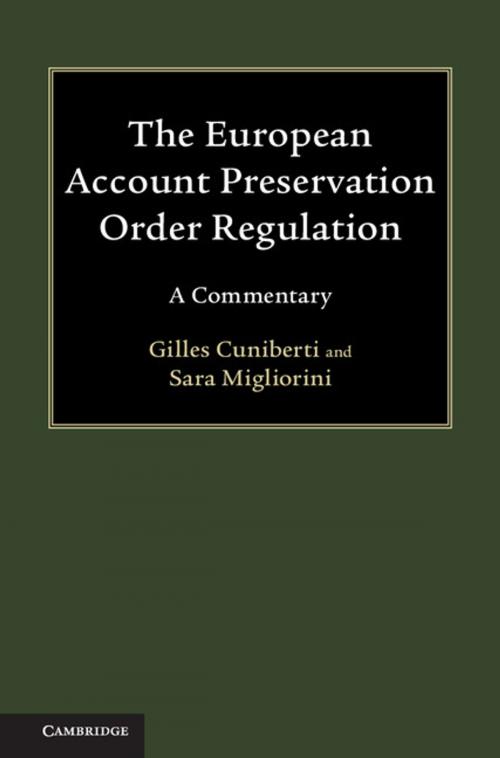The European Account Preservation Order Regulation
A Commentary
Nonfiction, Reference & Language, Law, Banking, Business & Finance| Author: | Gilles Cuniberti, Sara Migliorini | ISBN: | 9781316877265 |
| Publisher: | Cambridge University Press | Publication: | April 30, 2018 |
| Imprint: | Cambridge University Press | Language: | English |
| Author: | Gilles Cuniberti, Sara Migliorini |
| ISBN: | 9781316877265 |
| Publisher: | Cambridge University Press |
| Publication: | April 30, 2018 |
| Imprint: | Cambridge University Press |
| Language: | English |
The European Account Preservation Order (EAPO) Regulation provides a protective measure for creditors wishing to freeze the bank account of their debtor, preventing the transferral or withdrawal of funds. Courts can issue freezing measures over bank accounts located in other member states, thereby establishing a new remedy for cross-border debt recovery in Europe. This book provides a detailed article-by-article commentary of the EAPO Regulation. It describes its legislative history and structure and carries out a critical analysis of its provisions and recitals, focusing on the practical implementation of the instrument. The commentary also provides additional focus on the interplay between the EAPO Regulation and the existing EU instruments and framework, and examines specific issues that the implementation of the Regulation might raise in member states. This is an important resource tool for practitioners, legal scholars and students interested in the theoretical and practical implications of the EAPO Regulation.
The European Account Preservation Order (EAPO) Regulation provides a protective measure for creditors wishing to freeze the bank account of their debtor, preventing the transferral or withdrawal of funds. Courts can issue freezing measures over bank accounts located in other member states, thereby establishing a new remedy for cross-border debt recovery in Europe. This book provides a detailed article-by-article commentary of the EAPO Regulation. It describes its legislative history and structure and carries out a critical analysis of its provisions and recitals, focusing on the practical implementation of the instrument. The commentary also provides additional focus on the interplay between the EAPO Regulation and the existing EU instruments and framework, and examines specific issues that the implementation of the Regulation might raise in member states. This is an important resource tool for practitioners, legal scholars and students interested in the theoretical and practical implications of the EAPO Regulation.















